The recurve arrow rest is one of the last things you might think about when buying your first recurve bow. And while it may not be on the top of your list of considerations, this little device can significantly affect your accuracy as you grow as an archer and become more proficient with your bow.
But where do you start? Metal? Plastic? Stick-on?!
There are many options to choose from when it comes to arrow rests. But not all are suitable for beginners. Recommendations for beginners include stick-on plastic rests, while for more advanced archers there are drop-away rests and adjustable magnetic rests.
The primary purpose of the arrow rest is to protect the arrow from any potential damage it may occur from connecting with the riser upon release. Every type of rest will do this to some degree, but some perform that task better than others.
This article will cover everything you need to know about selecting and setting up your recurve arrow rest for the first time. I’ll also give some recommendations if you’re ready to progress further down the line.
How To Choose The Right Arrow Rest For Your Recurve Bow
Your purpose within archery will largely dictate the type of arrow rest you need. A beginner is usually more concerned about keeping the arrow on the rest, rather than how to tune the rest to the actual bow. So keeping things simple at the start is the best way to go.
Arrow rests come in a variety of materials and styles. Some require very little in the way of installation, while others require a little more tuning and setup.
3 main considerations for choosing an arrow rest for beginners are:
- Arrow Weight
- Arrow Support
- Arrow Interference
At a more advanced level, you could consider how adjustable the arrow rest needs to be.
Related: 3 Reasons Why Your Arrows Keep Falling Off The Rest
Beginner Recommendations
There are two options that I would recommend to beginners for recurve arrow rests. They are both very inexpensive and very easy to install and set up.
Shelf Rest
A shelf arrow rest is made from a strip of animal hair or felt material and is adhered to the shelf on your bow.
The main difference between a shelf rest and an arrow rest is that the arrow rest is attached to the vertical riser, while the shelf rest sits horizontally on the shelf.
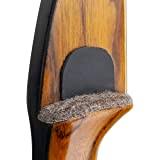
Super Rest
The Super Rest is a white plastic stick-on rest that has a very thin, bendable arm that the arrow rests on. The Super Rest is installed by using an adhesive backing which you place on the riser. Adjust its position until you are satisfied, then apply pressure until the rest sticks.
As the arrow is released, the thin plastic arm is pliable enough to move forward with the arrow so that the vanes clear the rest with minimal contact with the arrow shaft.
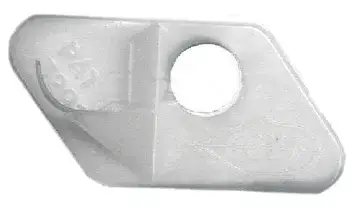
Because the Super Rest is made from very thin material, you should expect a high turnover, because, at some point, the arm will likely split and tear off. Not that big of a deal though, because at $2, the Super Rest is very cheap to replace.
Hunter Rest
The Hunter Rest, on the other hand, is made from much sturdier plastic. This rest is far less pliable than the Super Rest, which can cause connectivity issues upon release.
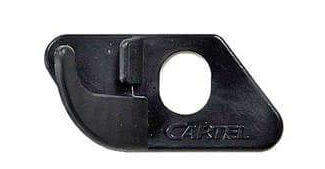
Archers rely on the arrow rests’ ability to move out of the way of the arrow, so the Hunter Rest doesn’t do such a good job in that regard. But it is durable and will last several years before needing to be replaced. If ever.
For target archers valuing accuracy, the Super Rest provides superior arrow clearance. However, for shooting many arrows with acceptable accuracy, the Hunter Rest suffices.
Recurve Bow Arrow Rests
Now that we’ve covered 3 basic styles of rests, let’s look at the next 3, slightly more advanced options:
Screw-In or Bolt-On Rests
The heavy-duty bolt-on or screw-in rests are a great option for shooting barebow or traditional archery. It is also best suited to heavy arrows.
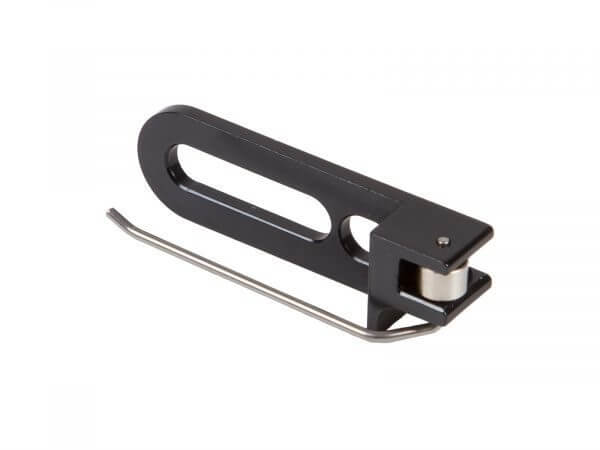
This kind of rest can also be used as a drop away because some come with opposing magnets that will cause the wire to be pulled in as the arrow is released.
Adjustable Bolt-On Magnetic Rest
This style of rest is adjustable, meaning that you can adjust how far the wire block comes out, plus you can adjust the wire in or out to suit your preference. As the magnets can be tricky to navigate, these styles of rests are mainly recommended for advanced and Olympic archers.
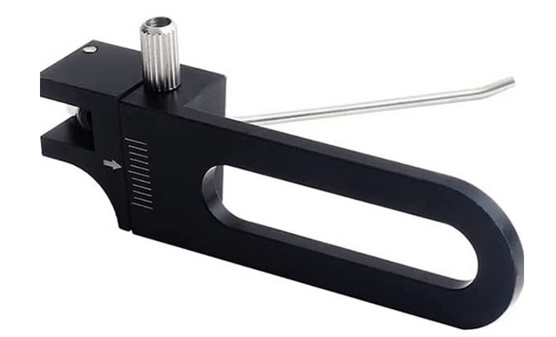
Some of the bolt-on rests also come fitted with magnets which allow you to position the rest arm at different positions. You can even set up some of the magnetic rests to be drop-away rests.
Stick On Metallic Rests
Similar in design and attachment to the plastic rests, the adjustable metal rests have the advantage of being fully adjustable. Plus, the thin metal rest arm is much more durable than the thin plastic.

The added feature of having magnets that allow the rest arm to move in upon release makes these types of rests the go-to option for target and Olympic archers.
How To Set Up A Recurve Arrow Rest
Arrow rests comprise a plate and a rest arm. The plate section of the rest usually has some sort of opening for the plunger button to fit through. Or in some adjustable rests’ cases a groove where the plunger button can glide.
The most important aspect of installing a recurve arrow rest is ensuring it is parallel to the riser. In most cases, the stick-on rests are shaped into an arrowhead that you can use to easily align the rest with the plunger hole.
Your arrow rest is either going to have an adhesive backing, or it will come with screws and bolts.
Either way, both are simple to install. For the bolt-on variants, you can simply line up the screws with the holes on the riser. Make sure that each screw is nice and tight.
For the rests that have an adhesive backing, make sure to line everything up correctly, because once installed they can be difficult to adjust without damaging the rest.
Apply a considerable amount of pressure to make sure that the rest sticks.
Do You Even Need An Arrow Rest On A Recurve Bow?
Traditional bows come with a shelf built into the bow’s riser which mitigates the need for an additional arrow rest. However, for most entry-level bows, traditional bows and anyone who shoots Olympic-style target archery, an arrow rest will have to be installed.
Installing an arrow rest ensures that the arrow’s flight path is not hindered by any obstructions as it leaves the bow at speed. This maximizes the arrow’s velocity as well as its accuracy.
The rest also minimises any damage that the arrow can potentially cause to the riser as it leaves the bow. The vanes can drag across the wooden shelf which can permanently mark the riser and even carve out grooves if not checked.
Damage to the arrow such as vanes ripping and tearing off can also occur over prolonged periods of time.
Loss of accuracy is also a factor if you only shoot off the shelf. Contact by the arrow against the shelf as it leaves the bow can cause a lift in the arrow’s trajectory. However, this can be compensated for by lots of practice, repetition and making small adjustments to the sight.
Conclusion
There is no right or wrong when it comes to choosing a recurve arrow rest. Trial and error are going to be your best bet here.
As you progress with your archery, you may even find that you feel more comfortable sticking to something like a Super Rest, purely for simplicity.
If you’re a traditionalist, remember that the more technical your bow gets, the further away from traditional you’ll be. But if competing and Olympic Style archery is the direction you see yourself going in, then you’ll need to choose one of the above rests.
Whichever type of rest you choose, remember that its main purpose is to protect the arrow and the bow from any damage, improve your accuracy and provide a consistent point of contact for the arrow whilst on the bow.

0 Comments